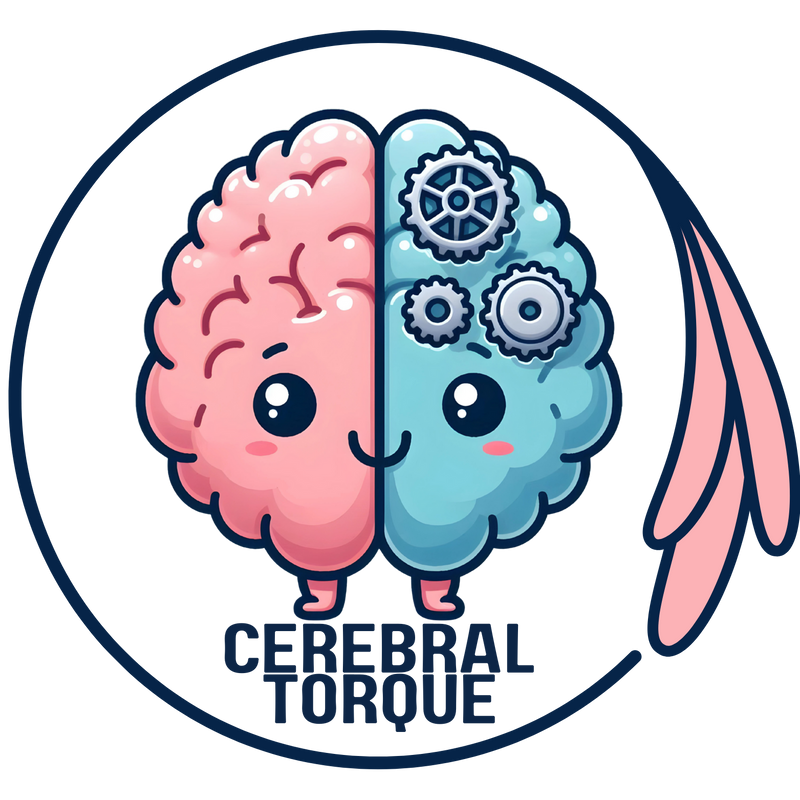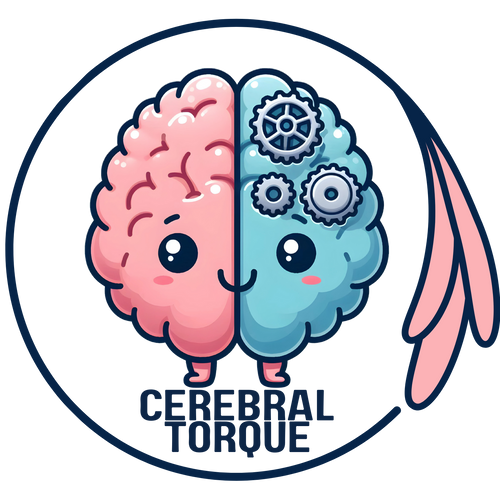Migraine Through a Woman's Life
Posted on June 25 2025,
Migraine Through Puberty and Menopause
The Bottom Line
If you've been holding out hope that menopause will magically end your migraine attacks, this research has some sobering news. A large-scale study of nearly 5,000 Norwegian women found that while migraine attacks do tend to resolve during the fifth decade of life, the relationship with menopause is more complicated than the conventional wisdom suggests.
Why This Matters
The common belief that migraine attacks simply "go away" after menopause is an oversimplification. This research shows that menstruation cessation does not automatically mean migraine cessation. Nearly half of women in this study continued experiencing migraine attacks after menopause, and one in five still had them after age 60. This has real implications for treatment planning and patient expectations.
About the Study
This research comes from the Norwegian Women and Health Study (NOWAC), an ongoing population-based health survey that began in 1991. The study analyzed data from 4,825 women with a history of migraine, all between 60 and 74 years old when they completed detailed questionnaires about their migraine history and reproductive milestones.
What makes this study particularly valuable is its population-based design. Unlike many migraine studies that recruit from headache clinics (which tend to see more severe cases), this research drew from the general Norwegian population. The validation study for the migraine questions reported a kappa value of 0.71, indicating good consistency with clinical diagnostic criteria.
When Migraine attacks Start and Stop
The study provides clear data on the typical timeline of migraine across a woman's life. The average age at first migraine was 27.8 years, though this varied considerably. Nearly 29% of women reported their first migraine during their teens (ages 10-19), while about 10% developed migraine after age 50 - a finding that challenges assumptions about migraine being purely a young person's condition.
Age Distribution at Migraine Onset and Cessation
This table shows when women first experienced migraine and when their migraine attacks stopped, revealing the full spectrum of migraine timing across the lifespan.
| Age Range | First Migraine (%) | Last Migraine (%) | Key Observations |
|---|---|---|---|
| Under 10 | 3.0% | 0.1% | Early childhood onsetMay indicate stronger genetic component |
| 10-19 | 28.7% | 1.9% | Peak onset periodPuberty-related hormonal changes likely play a role |
| 20-29 | 24.4% | 4.2% | Young adult onset commonReproductive years beginning |
| 30-39 | 19.8% | 8.3% | Mid-life onsetSome women first develop migraine in their 30s |
| 40-49 | 14.9% | 18.9% | Transition periodPerimenopausal changes may affect patterns |
| 50-59 | 7.6% | 47.3% | Peak cessation decadeNearly half stop during this period |
| 60-69 | 1.6% | 18.4% | Late cessationSignificant minority continues into 60s |
| 70+ | - | 0.9% | Persistent migraineSome women continue into their 70s |
Late-Onset Migraine: More Common Than You Might Think
About 9.2% of women in this study reported their first migraine after age 50. This is worth noting because migraine starting later in life requires careful clinical evaluation to rule out secondary causes. The research team flagged this as an area needing further investigation.
The Menarche Connection
The relationship between first menstruation (menarche) and migraine onset provides insight into how reproductive hormones influence migraine development. The average age at menarche was 13.2 years, with the vast majority of women (84.8%) developing migraine after their first period.
These numbers align with the well-established understanding that hormonal fluctuations play a significant role in migraine. The fact that most women develop migraine after menarche supports the link between cyclic estrogen changes and migraine susceptibility. However, the 10% who developed migraine before their first period suggest that hormones aren't the whole story - other factors, possibly genetic or neurological, are clearly involved.
The Postmenopausal Reality
Here's where the research challenges conventional thinking. The average age at menopause was 50.1 years - essentially identical to the average age at last migraine (49.7 years). That temporal alignment might suggest a clean break, but the actual data tells a different story.
Why Migraine attacks Don't Just Switch Off at Menopause
The researchers note that menopause - defined as the cessation of menstruation - is really just a technical marker. Ovarian function doesn't abruptly stop; it declines gradually. The data shows a gradual decline in migraine prevalence with increasing time since the last menstruation, rather than an immediate drop-off. This makes sense when you consider that hormonal changes during and after menopause are a transition, not a single event.
Additionally, the duration between menarche and menopause has been increasing. A recent Norwegian study found that for women born between the 1930s and 1960s, both the age at menopause and the duration of reproductive life increased by three years. This means women are experiencing cyclic hormonal fluctuations longer, which may impact how long migraine persists.
Migraine With Aura vs Without Aura
The study also compared women with migraine with aura (MA) versus migraine without aura (MO). About 34% of the migraine population reported having aura "most of the time," while the remainder experienced migraine without aura or only occasional aura.
Women with migraine with aura showed a tendency toward earlier onset and were more likely to experience migraine before menarche compared to those without aura. This aligns with existing research suggesting that migraine with aura may be less closely tied to menstrual cycles than migraine without aura. Menstrually-related migraine attacks are typically without aura, which makes sense given that MA appears somewhat more independent of reproductive hormone fluctuations.
Aura in Older Adults
The researchers note that migraine aura without headache is more prevalent in older adults and predominantly presents with visual symptoms. This can create diagnostic challenges since aura symptoms in older people may resemble transient ischemic attacks or seizures. Both MA and MO followed similar patterns of cessation in this cohort, which is an important clinical observation.
What This Means for Treatment
These findings have several practical implications for how we think about migraine management across the lifespan.
The data show that telling patients "your migraine attacks will stop at menopause" is misleading. While there's a clear temporal relationship between menopause timing and migraine cessation in many women, nearly half continue to have migraine attacks afterward. Patients deserve accurate information about what to expect - including the possibility that their migraine attacks may persist well into their 60s.
With aging populations globally, the number of older adults with migraine is increasing. Migraine management in older adults brings additional considerations: polypharmacy, comorbidities, and different risk profiles for certain treatments. The persistence of migraine in a significant proportion of postmenopausal women makes continued research on treatment approaches for this population important.
The gradual decline in migraine prevalence after menopause - rather than an abrupt stop - reflects the gradual nature of hormonal changes during this transition. The neuroendocrine system undergoes substantial changes with aging, including estrogen fluctuations approaching menopause and changes in feedback loops to the pituitary and hypothalamus. These shifts in female sex hormones don't directly cause migraine changes, but the interplay between brain changes and hormonal fluctuations during the menopausal transition clearly affects migraine patterns.
- Migraine cessation typically occurs in the fifth decade of life, but timing varies widely
- Nearly half of women with migraine continue to experience attacks after menopause
- One in five women still has migraine attacks after age 60
- Migraine with aura may be less tied to reproductive hormones than migraine without aura
- Late-onset migraine (after 50) occurs in about 9% of cases and warrants thorough evaluation
- Treatment planning should account for the possibility of persistent migraine postmenopause
This information is for educational purposes only and should not replace professional medical advice, diagnosis, or treatment. If you're experiencing changes in your migraine patterns - whether improvement or worsening - discuss this with your healthcare provider. New-onset headache after age 50 always warrants medical evaluation to rule out secondary causes.
References
- Bugge NS, Vetvik KG, Alstadhaug KB, Braaten T. Migraine through puberty and menopausal transition - data from the population-based Norwegian Women and Health study (NOWAC). The Journal of Headache and Pain. 2025;26:145. doi:10.1186/s10194-025-02083-3
- Stovner LJ, Hagen K, Linde M, et al. The global prevalence of headache: an update, with analysis of the influences of methodological factors on prevalence estimates. J Headache Pain. 2022;23:34.
- MacGregor EA. Menstrual and perimenopausal migraine: A narrative review. Maturitas. 2020;142:24-30.
- Vetvik KG, MacGregor EA. Menstrual migraine: a distinct disorder needing greater recognition. Lancet Neurol. 2021;20:304-315.
- Ornello R, Caponnetto V, Frattale I, et al. Patterns of migraine in postmenopausal women: A systematic review. Neuropsychiatr Dis Treat. 2021;17:859-871.
- Gottschalk MS, Eskild A, Hofvind S, et al. Temporal trends in age at menarche and age at menopause: a population study of 312,656 women in Norway. Hum Reprod. 2020;35:464-471.
- Haan J, Hollander J, Ferrari MD. Migraine in the elderly: a review. Cephalalgia. 2007;27:97-106.
Sun, Jan 04, 26
Long-Term Safety of Anti-CGRP Monoclonal Antibodies
A comprehensive meta-analysis of over 4,300 patients reveals that erenumab, galcanezumab, fremanezumab, and eptinezumab maintain good tolerability beyond 12 months. Only 3% of patients stopped treatment due to adverse events,...
Read MoreThu, Jan 01, 26
Alternate Nostril Breathing Protocol for Migraine
Alternate nostril breathing is a simple yogic technique that's showing real promise for migraine prevention. Unlike acute treatments, this practice builds nervous system resilience over time - making attacks less...
Read MoreFri, Dec 26, 25
Why Migraine and Jaw Pain Go Together: New Research (2025) Explains the Link
A 2025 systematic review of over 10,000 patients confirms a strong bidirectional link between migraine and temporomandibular disorders. People with migraine are 6 times more likely to develop TMD, while...
Read More


